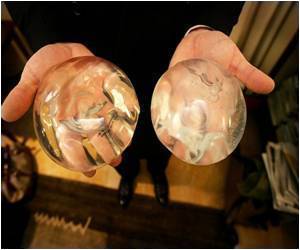Breast implants are only getting more common, but the number of people coming down with a rare cancer linked to one kind of breast implant is growing too.

‘Breast implants are not lifetime devices. The longer you have breast implants, the more likely it is that complications will occur and you will need to have them removed.’





In a new literature review, the researchers analyzed 115 research articles in which 95 patients were evaluated to learn more about the development, risk factors, diagnosis and treatment of BIA-ALCL. The results were published in a research review today (October 18) in JAMA Surgery. "We're seeing that this cancer is likely very underreported, and as more information on this type of cancer comes to light, the number of cases is likely to increase in the coming years," said Dino Ravnic, assistant professor of surgery, Penn State College of Medicine. "We're still exploring the exact causes, but according to current knowledge, this cancer only really started to appear after textured implants came on the market in the 1990s."
BIA-ALCL is estimated to affect 1 in 30,000 women with breast implants each year, although the researchers said the cancer could be more common. The researchers said almost all of those cases were associated with textured implants, which have a slightly rough surface that keeps the implant in the correct position.
Textured implants rose in popularity in the 1990s, and the first case of BIA-ALCL was documented in 1997. The researchers say that because they could find no incidents of BIA-ALCL prior to the introduction of textured implants, this suggests a causal relationship, although more research is needed.
"All manufacturers of textured implants have had cases linked to this type of lymphoma, and we haven't seen cases linked to smooth implants," Ravnic said. "But in many of these cases the implant was removed without testing the surrounding fluid and tissue for lymphoma cells, so it's difficult to definitively correlate the two."
Advertisement
In the cases analyzed, BIA-ALCL typically developed slowly, with good prognoses for patients who had both the implant and surrounding scar tissue removed. Of the 95 patients in the review, five died.
Advertisement
Source-Eurekalert














